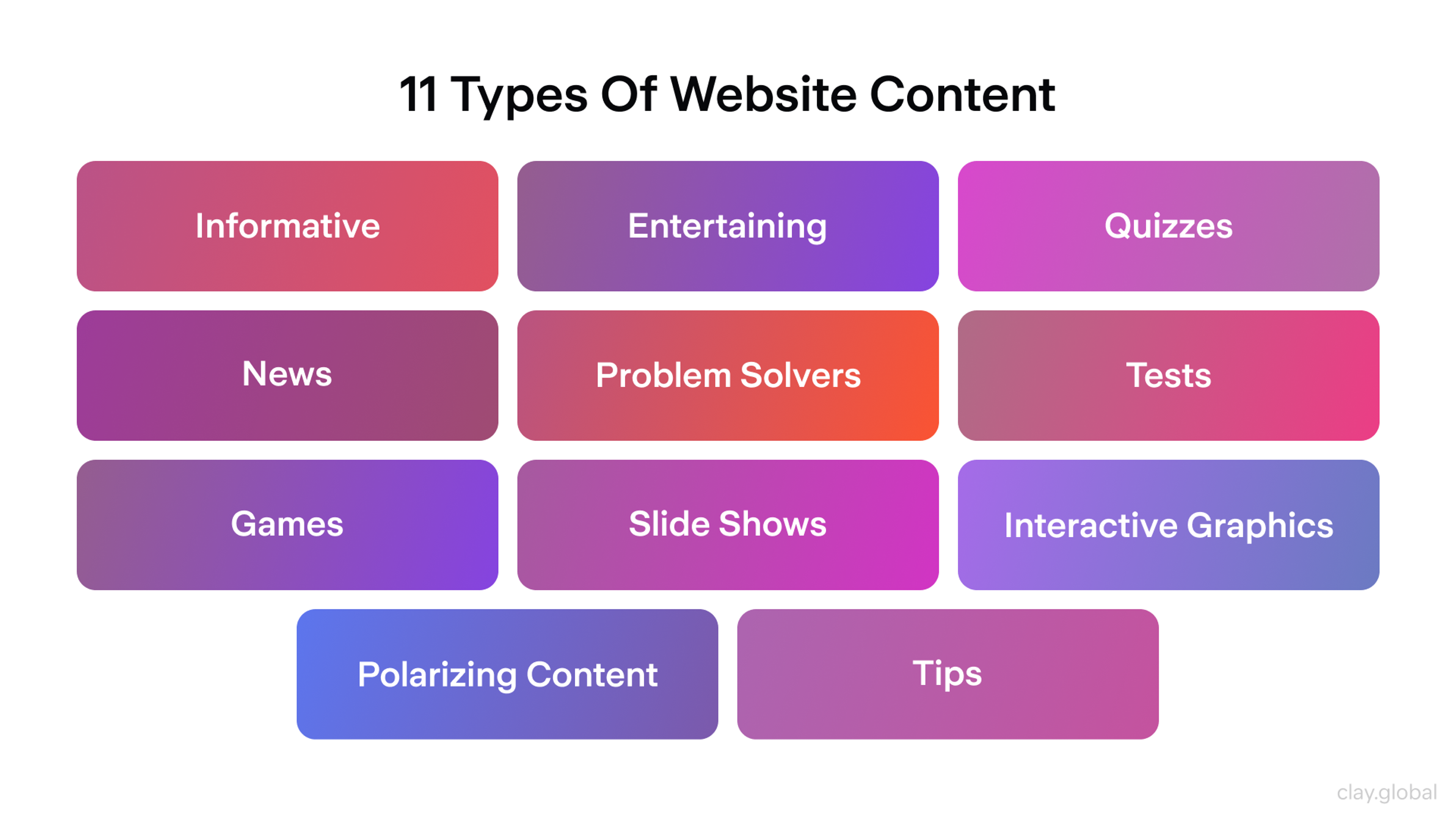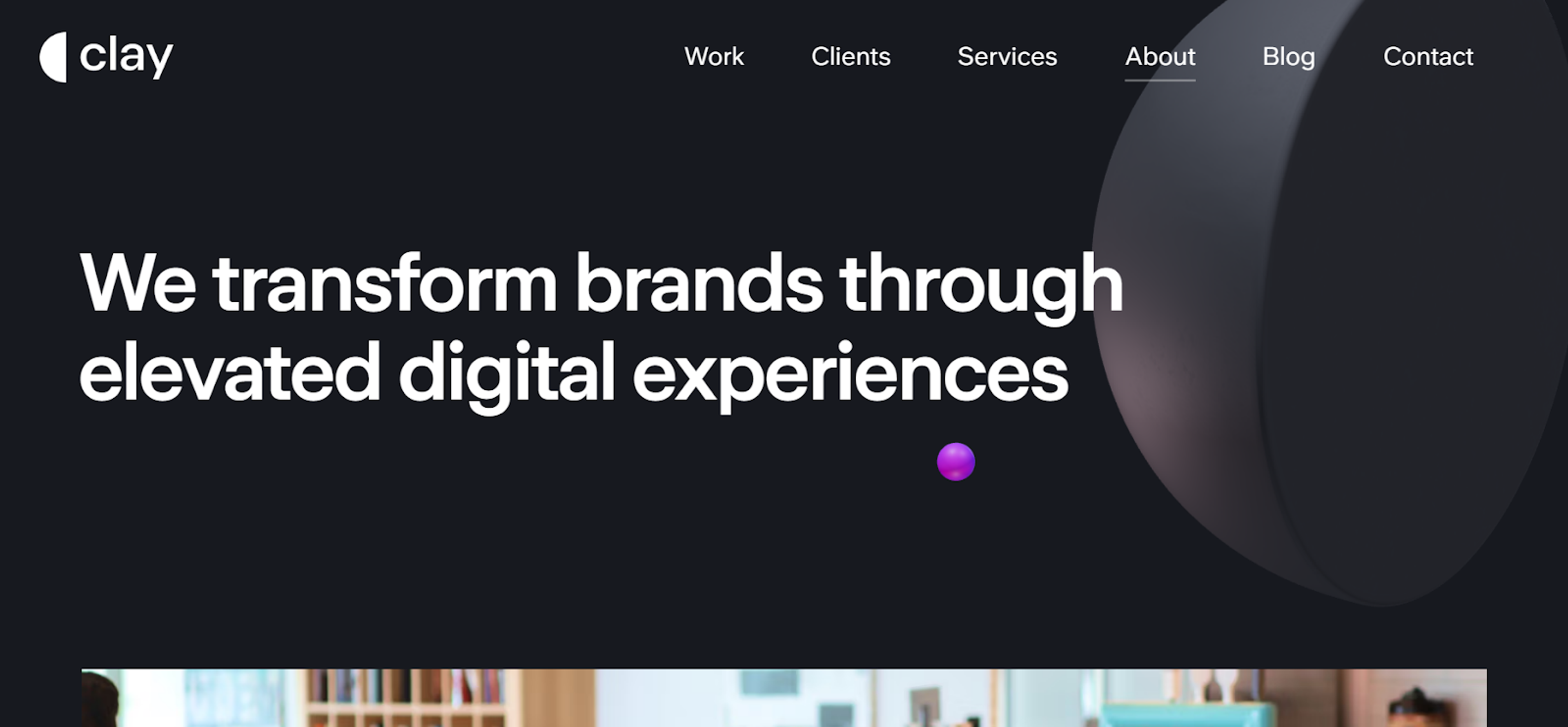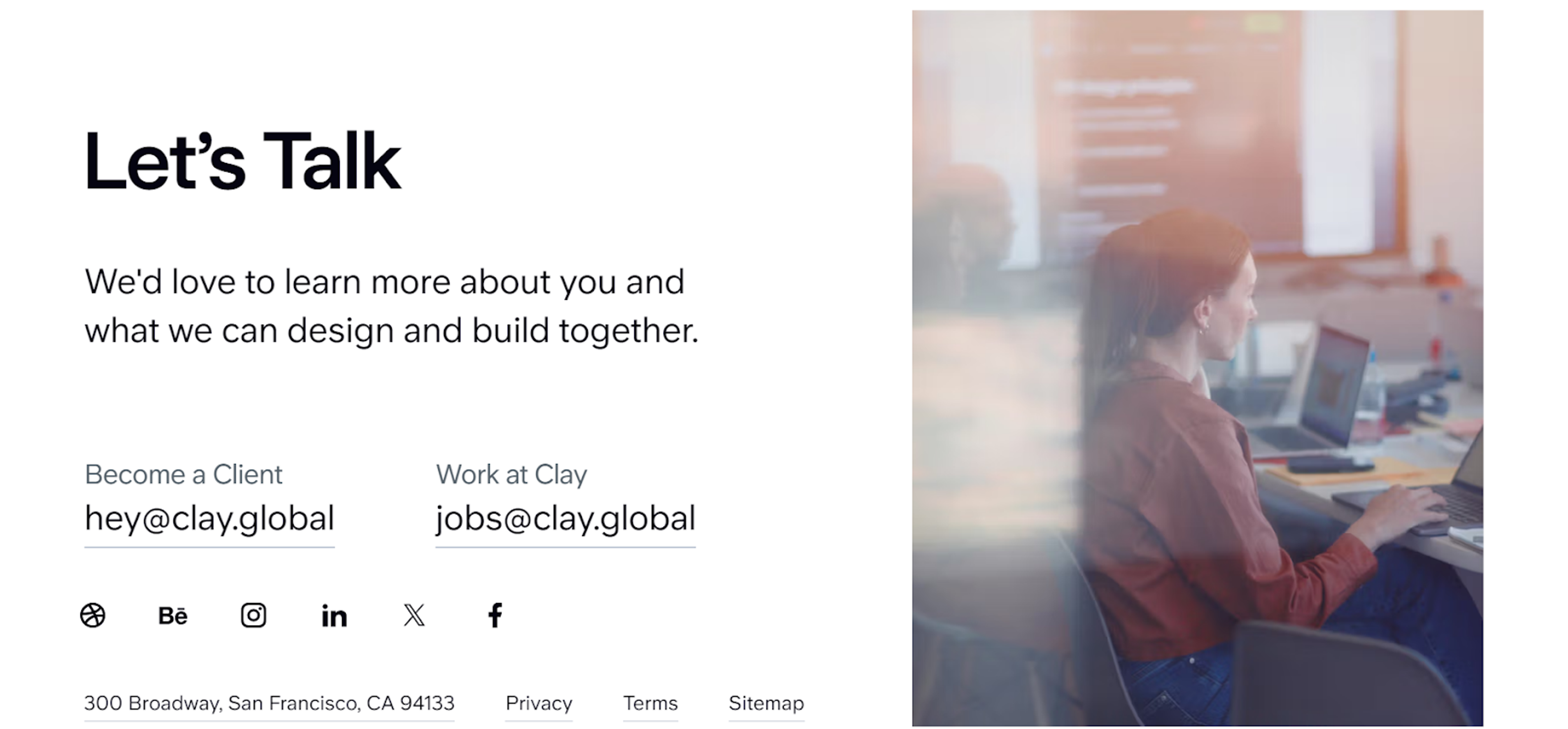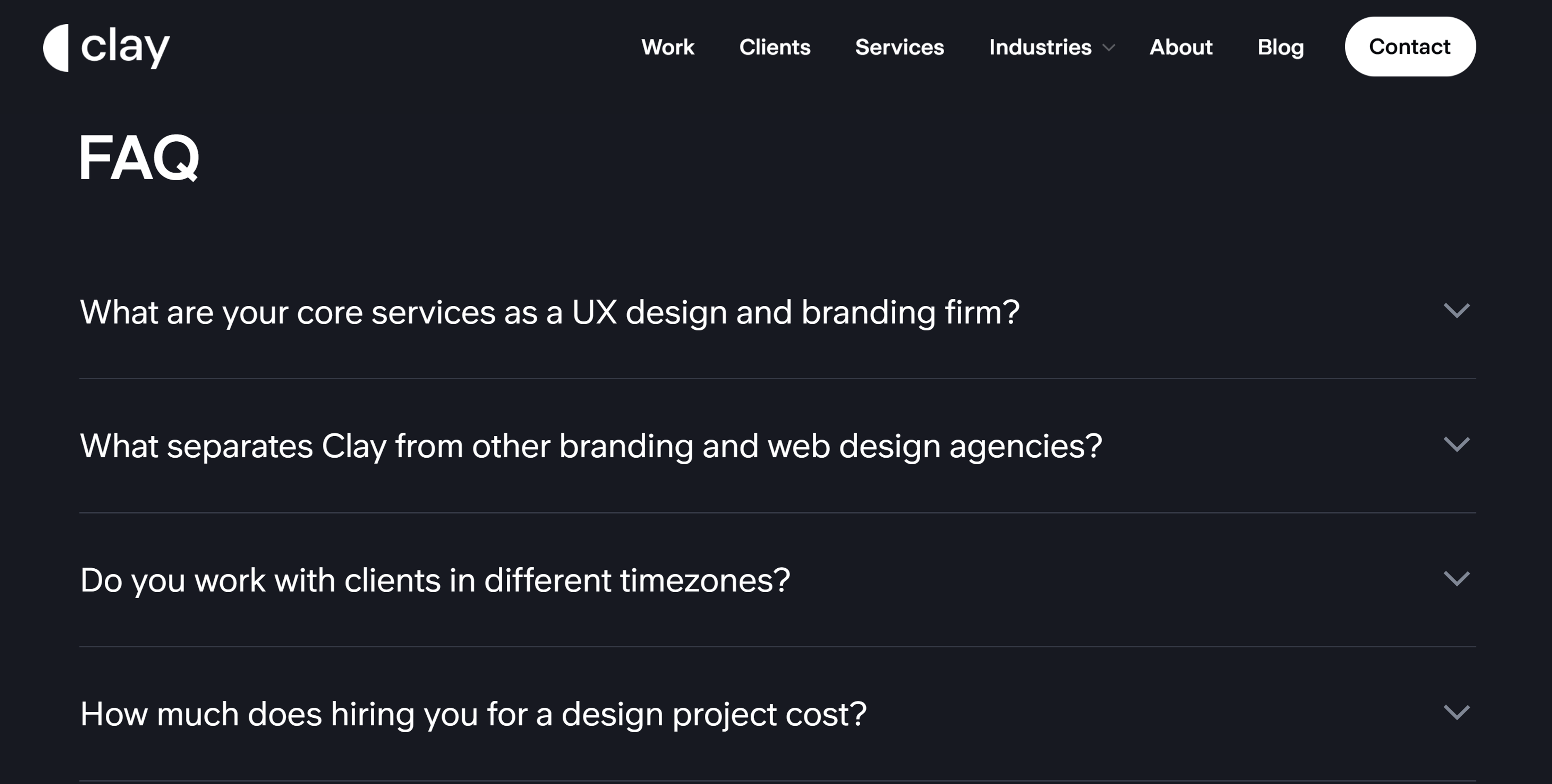Excellent website content feels like a friendly handshake through the screen. It guides visitors smoothly, answers their questions, and makes them think, "I need this right now." Quality content drives more leads than traditional marketing while costing less.
Think of your homepage and main pages as your digital storefront. They are the first touchpoints that shape how visitors perceive your brand and set the tone for their experience.
Your website is a guided tour that turns visitors into customers. Each page should move people forward with clear information, a strong value proposition that communicates why they should choose your brand, and obvious next steps. This article shows you how to create content that engages, ranks higher, and encourages visitors to stay longer, take action, or return through proven strategies.
What Is Website Content?
Website content includes everything visitors find on your pages (that is, everything site visitors interact with): text, images, videos, audio, charts, calculators, and interactive tools. But it's not just random files sitting on a server.
11 Types of Website Content

Think of your content as a connected network. Every piece should guide visitors toward completing a task and lead smoothly to the next logical step. View your entire site as a trail, not as isolated islands.
The goal is to keep people moving forward so they never hit a dead end. This requires thoughtful planning and intentional structure.
Web Copy vs Web Content
People often use these terms interchangeably, but they serve different purposes.
Web copy is persuasive writing designed to sell. It appears on landing pages, product descriptions, and advertisements. The goal is to encourage visitors to take action immediately. Compelling web copy speaks directly to customer needs, addresses objections, and concludes with a clear call to action.
Web content is informational writing designed to educate and inform. It shows up in blog posts, guides, tutorials, and help documentation. The goal is to build trust by answering questions and solving problems.
Well-crafted written content is essential for educating visitors and building trust, as it conveys your brand's expertise and supports your overall website strategy. Quality web content establishes your expertise and helps visitors make informed decisions.
Both types work together on successful websites. Your homepage might feature persuasive copy while your blog delivers helpful content. Knowing the difference helps you write more effectively for each purpose.
Why Quality Website Content Matters
Strong content attracts visitors who are skeptical of flashy marketing. It demonstrates expertise and builds trust by clearly answering real questions. Search engines favor relevant, in-depth content that effectively serves users.
Quality work drives conversions. When visitors feel informed and confident, they are more likely to take the next step. Clear paths lead to more action. High-quality content not only engages your audience but also enhances your website's search engine rankings and improves its visibility in search engine results.
Well-researched content ranks higher in search results and boosts search engine rankings. Search engines reward pages that match user intent and deliver genuine value, with high-quality content being a key factor in this process.
Content Hierarchy & Information Architecture
A content hierarchy shapes raw ideas into a usable structure. Each page should tackle one main question and break it into sections that flow logically. When organizing web pages, ensure clarity by structuring content in a way that guides users through information efficiently.
Use H1, H2, and H3 tags to create a clear organizational structure. Start with a brief intro that previews the answer. Place calls to action and related links where people expect them.
Users read only a fraction of words on a page, making a scannable structure essential. Use short paragraphs and bullet points to enhance readability and organization, making content easier to digest.
Master this approach and everyone wins. Scanners glide through quickly. Deep readers find valuable details. All visitors leave with clear next steps thanks to solid information architecture.
Map Your Content Strategy and Ecosystem
Sketch where each piece lives along the buyer's journey: research, decision, or support. Look for repeated topics, missing subjects, and orphaned pages with no links.
Each page should offer two smart next steps. One keeps readers at the same level. The other moves them closer to making a purchase or taking action. This strategy fills gaps, boosts search rankings through intelligent linking, and guides users without dead ends. Be sure to link to other pages, such as related content, FAQs, or landing pages, to improve navigation and increase user engagement.
Common Website Sections
Build solid basics so visitors can easily navigate through your site.
Home pages state your value in five words or fewer. Add one piece of evidence and provide clear links to the main sections.
Clay Homepage

About pages share your mission and values. Write for why readers should care, not how your team is structured.
Product pages and Service pages list benefits first, add features next, and conclude with clear calls to action, such as "Buy now" or "Schedule a demo." Product pages are a key section for showcasing your offerings and driving conversions.
The contact page offers phone, form, email, and live chat. Set real expectations on response time. A well-designed contact page helps visitors connect and can improve conversion rates.
Clay Contact Page

Blog or News sections share fresh insights that improve your search visibility. Groups post by topics or tasks that users need to complete.
Testimonials and Reviews pages spotlight specific proof rather than vague praise. Feature customer testimonials and stories from satisfied customers to build trust and credibility.
Privacy and Terms pages use everyday language so users feel understood, not overwhelmed.
FAQ pages address real objections with quick answers to reduce friction.
Clay FAQ Page

Content Types That Drive Results
Types of Website Content
The best content puts your audience first and answers their real questions. Content plays different roles in engaging visitors, building brand authority, and supporting your business goals. Each content type serves a specific purpose in guiding visitors toward action.
- Marketing pages, such as your homepage, About page, and landing pages, communicate your brand story. They introduce who you are and what you offer. These pages typically combine text with photos, illustrations, and graphics to create a strong first impression.
- Product and service pages: These pages explain the value and encourage customers to make purchases. They show outcomes before features, address objections directly, and include clear calls to action such as "Add to Cart" or "Get Started". Many also include customer questions and reviews to reduce doubts.
Clay Services Page

- Blog posts and educational content: Blog posts provide educational or entertaining content that attracts visitors through search engines. They do not always focus directly on your company. Instead, they answer questions your audience searches for and establish your expertise. Comprehensive how-to guides and long-form content help attract and engage visitors by offering in-depth answers and valuable resources.
- User-generated content, including testimonials and reviews, fosters trust through social proof. When potential customers see others succeeding with your product, they feel more confident in making a purchase. This content encourages action by showcasing real results from real people, thereby supporting authority and trust.
- Case studies: Case studies show your solution in action with specific customers. They work exceptionally well for business-to-business companies. Strong case studies describe the problem, explain your solution, and measure the results. One clear metric is more persuasive than vague praise.
- Downloadable content and lead magnets: Downloadable content, such as ebooks and guides, can attract qualified leads. You offer valuable resources in exchange for contact information. This works when the content provides specific insights that are hard to find elsewhere. Long-form educational content and detailed how-to guides can serve as effective lead magnets, as long as the value clearly justifies the exchange.
- Help Center content and FAQs: The Help Center articles and FAQs provide answers to common customer questions and help solve problems. They reduce frustration and lower the load on your support team. When customers find answers quickly, satisfaction rises and support costs fall.
- Rich multimedia and interactive elements: Rich multimedia and interactive tools lighten the mental load and speed up decision-making. Short videos explain complex ideas quickly. Labeled screenshots guide users through processes. Calculators help visitors estimate costs or benefits. Making your content visually engaging and visually appealing with images, videos, and icons helps capture attention and improve engagement. Always add captions and transcripts for accessibility and search optimization.
For example, in designing Fooji's Crowdsail web app, we focused on creating an intuitive and enjoyable user experience. We incorporated helpful tips, descriptive elements, and thoughtful interactive behaviors to enhance user-friendliness.
Fooji Intuitive Design by Clay
Additionally, we crafted custom illustrations and icons to uphold the brand's identity, strengthening the connection and preserving a friendly brand language.
Designed to assist users in their purchasing journey with convincing calls-to-action and customer-focused messaging. Provide information that solves unique selling propositions and potential objections for maximum impact.
How to Write Good Website Content: 5 Tips
1. Start with User Research
Understand what your audience needs before you write a single word. Use keyword research tools like Semrush to discover what people actually search for, and to identify target keywords, relevant keywords, and competitive keywords.
Study your competitors to identify gaps in their coverage and analyze the target keywords and competitive keywords for which they rank. Speak with customers to understand their genuine concerns and questions. This research focuses on topics that attract exemplary visitors, tailoring content to the target audience and optimizing for the target keyword, while answering genuine needs.
2. Write Clear, Scannable Content
Break up text with descriptive headings. Keep paragraphs short, usually three to five sentences, and use short paragraphs to enhance readability. Use simple words instead of jargon, and try to use the exact words your customers use to improve clarity and search visibility.
Put your most important point first in each section. Break up information with bullet points where possible to make the content clear and easy to scan. This structure helps both scanning visitors and search engines quickly understand your content.
3. Focus on Benefits, Not Features
Show readers how your content helps them solve problems. Instead of listing technical specifications, explain what those specs mean for daily use. Answer the question "What's in it for me?" throughout your writing. Benefits create an emotional connection, whereas features only provide information. Ensure the benefits you highlight align with your business goals.
4. Match Your Brand Voice
Maintain a consistent tone throughout all pages, ensuring that all content remains on brand to reinforce recognition and trust. Brand guidelines define how you sound, whether professional, friendly, or playful. Consistency builds recognition and trust. One page shouldn't sound corporate while another feels casual unless there's an apparent strategic reason.
5. Optimize for Search and Humans
Balance keywords with natural, valuable writing as part of your overall search engine optimization strategy. Optimizing your content for search engines involves incorporating relevant search terms naturally into your content, while also utilizing meta tags and descriptive alt text for images to enhance visibility and accessibility.
Avoid keyword stuffing, as overusing keywords can harm both user experience and your search engine ranking. Tools like Google Analytics help identify which pages perform well and which require improvement. But always write for humans first. Content that helps real people ultimately ranks better in search results, so review your content for quality and optimization before publishing.
How to Plan Website Content Structure
- Conduct User and Keyword Research: Start by identifying what your audience needs and searches for. Keyword research reveals high-intent terms that attract qualified visitors. User research, including surveys, interviews, and analytics, uncovers the problems your content should solve. Combine both to build a foundation of topics that matter, and use this research to generate content ideas that resonate with your audience.
- Define Content Goals: Align your content with business objectives. For many website content pieces, lead generation is a key objective, helping to attract and convert potential customers. Decide whether each piece should generate leads, support customers, or drive direct sales. Clear goals shape every decision from topic selection to calls to action. When goals are fuzzy, content lacks focus and fails to convert.
- Developing an Effective Information Architecture: The process of creating an effective information architecture involves multiple stages, from initial planning to final organization. Map your site structure and page relationships. Group related topics together. Plan logical paths from general information to specific details. Ensure every page connects to others through relevant internal links. Strong architecture helps visitors and search engines navigate your content easily.
- Develop a Content Calendar: Plan topics, formats, and publishing schedules to ensure consistency and effectiveness. A content calendar helps coordinate and streamline your content efforts. A calendar keeps content production steady and prevents last-minute scrambling. Coordinate timing with business events, product launches, and seasonal trends to ensure optimal alignment and maximize impact. Regular publishing helps build audience expectations and enhances search visibility.
- Establish Quality Standards: Set guidelines for voice, tone, and accuracy. Define what quality means for your brand. Establish review processes that identify errors before publication. Standards ensure every piece meets your bar regardless of who writes it. Consistency builds credibility over time, so make sure all content remains up to date to maintain trust.
FAQ
What Is Website Content?
Website content is all the text, visuals, tools, and interactive elements on a site that help visitors understand your offer, complete tasks, and get value from each visit. Effective content management is crucial for organizing and maintaining content, ensuring it remains relevant and up-to-date.
How To Write Content For A Website?
Start from user intent, answer one straightforward question per section, use simple active language, structure with headings, and end important sections with a relevant call to action. A structured content creation process is essential for developing effective website content that meets user needs and supports your goals.
How Do Brand Guidelines Influence Website Content?
Brand guidelines define your voice, tone, messaging, and visual rules, so every page feels consistent, recognizable, and aligned with your positioning and values.
How To Do A Website Content Audit?
Inventory all pages, review each for accuracy, relevance, SEO, and performance, then label items to keep, update, merge, or remove so your site focuses on the most effective content.
How To Optimize Website Content?
Refine copy to align with real search intent, enhance headings and internal links, optimize media, update metadata, and test variations to boost engagement, rankings, and conversions. Optimizing website content also increases visibility in search results.
Why Is Content Important In A Website?
Content is what users come for: it explains who you are, solves their problems, builds trust, and ultimately turns anonymous visitors into leads, customers, or subscribers. Strong, consistent content keeps your audience engaged and encourages them to take action.
Read more:
Conclusion
Strong website content works as a unified system. It guides visitors through a clear structure, connects related pages naturally, and delivers measurable outcomes. When each page serves a specific purpose and points to logical next steps, you turn fleeting attention into steady progress and tangible results.


About Clay
Clay is a UI/UX design & branding agency in San Francisco. We team up with startups and leading brands to create transformative digital experience. Clients: Facebook, Slack, Google, Amazon, Credit Karma, Zenefits, etc.
Learn more

About Clay
Clay is a UI/UX design & branding agency in San Francisco. We team up with startups and leading brands to create transformative digital experience. Clients: Facebook, Slack, Google, Amazon, Credit Karma, Zenefits, etc.
Learn more


